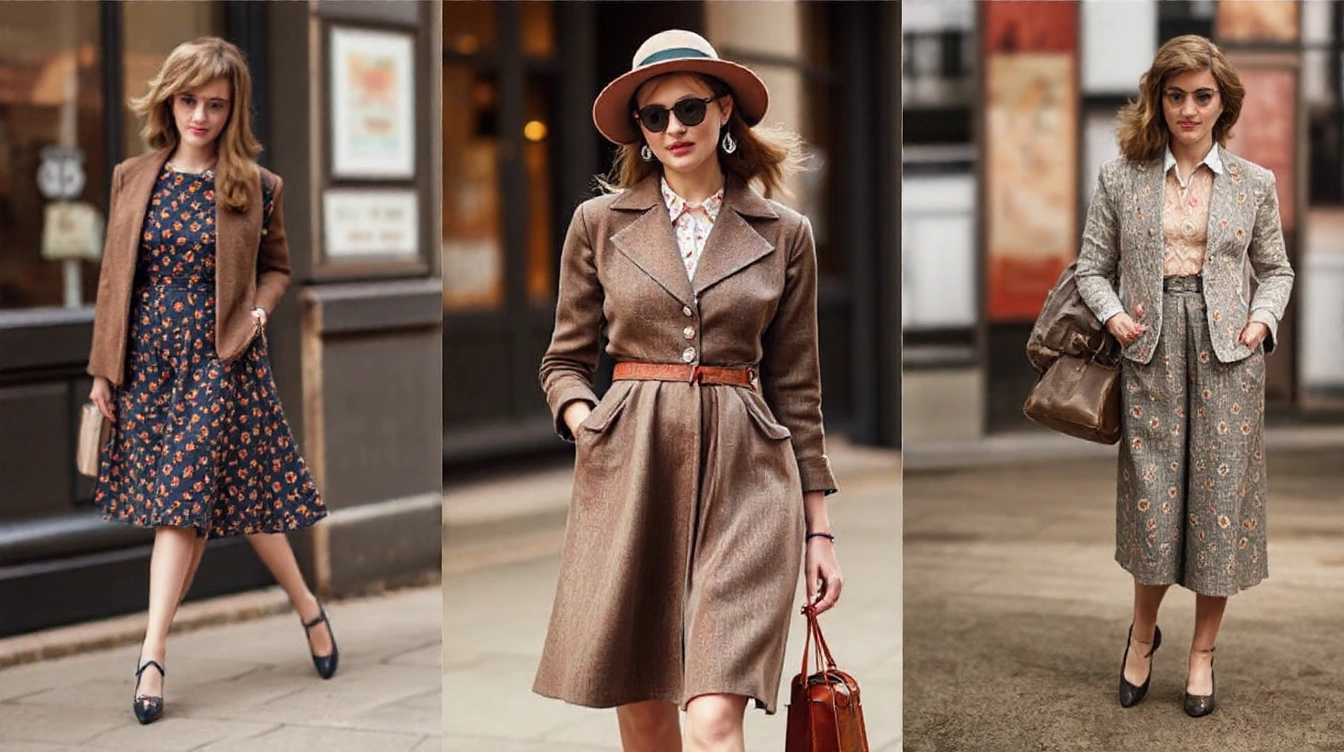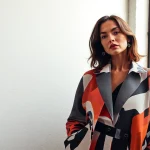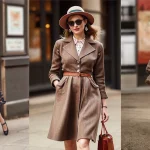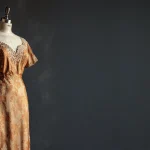Elevate Your Wardrobe with UK Vintage Fashion Inspirations
Discovering UK vintage fashion trends offers a unique way to elevate your wardrobe with timeless style. The UK’s rich fashion history spans numerous vintage fashion eras, each bringing distinct looks and moods. From the elegant 1920s flapper silhouettes to the rebellious 1970s punk statements and the bold 1990s grunge aesthetics, these eras showcase evolving tastes that continue to inspire.
British vintage style inspiration often centers on signature elements such as tailored tailoring, tweeds, and iconic trench coats, which speak to the country’s sartorial heritage. Accessories like brooches, hats, and classic footwear complete the look, underscoring a refined yet individualistic approach.
In the same genre : What Are the Key Challenges Facing Women’s Fashion Retailers in the UK?
Why does vintage style remain popular today? It offers more than nostalgia; it reflects an ongoing desire for sustainable fashion and self-expression through pieces that tell stories. Embracing vintage allows you to combine history with contemporary flair. For those exploring how to incorporate these trends, mixing eras or focusing on key pieces ensures a fresh, personalized wardrobe that speaks volumes about taste and creativity. This fusion of past and present keeps UK vintage fashion trends vibrant and relevant.
Essential UK Vintage Pieces to Own
Exploring a British vintage wardrobe means focusing on must-have vintage clothing that balances style with timeless appeal. A well-curated collection includes several key vintage pieces that define classic UK fashion.
Also read : What Are the Ethical Concerns in UK Women’s Fashion Industry?
First, a tweed blazer is indispensable. Its textured fabric and structured cut offer versatility, pairing well with both casual and formal outfits. Tweed blazers have long been a hallmark of British tailoring, making them a durable investment. Similarly, a traditional trench coat is essential. Its water-resistant fabric and elegant silhouette suit unpredictable UK weather and effortlessly elevate any look.
For those seeking feminine flair, tea dresses provide a charming vintage vibe. These lightweight, flowing garments often feature delicate prints or lace, making them ideal for daytime wear. Alternatively, the mod mini skirt captures the youthful, rebellious spirit of 1960s Britain with its bold lines and flattering shape.
Incorporating statement accessories, like vintage brooches or leather satchels, adds personality to these staples. Identifying garments that combine timelessness and versatility ensures each piece can be mixed and matched seamlessly within your vintage collection, enhancing the overall aesthetic and wearability.
Sourcing Authentic Vintage in the UK
Finding authentic vintage clothes in the UK requires knowing where to shop and how to evaluate each piece. For genuine vintage shopping, cities like London, Brighton, and Manchester are hotspots, offering a mix of vintage stores UK locals and visitors trust. Notable markets such as Brick Lane and Portobello Road provide a diverse selection, often featuring seller expertise that helps confirm authenticity.
When evaluating vintage clothes, check for original labels, quality stitching, and materials consistent with the era. Authentic pieces often show signs of wear but should retain durable fabric and detail. Avoid modern reproductions that mimic vintage styles; subtle fabric blends or rushed construction are telltale signs. Asking sellers about garment provenance adds confidence.
For those on a budget, secondhand shops and online vintage platforms in the UK offer excellent deals, enabling collectors to build wardrobes without overspending. Combining offline browsing with online research ensures a wide variety of options. To maximize value, prioritize items that connect to your style and plan for eventual restoration or cleaning.
Mastering authentic vintage shopping in the UK blends knowledge with patience—arming you to discover unique pieces that last.
Styling Tips to Modernise Vintage Looks
To embrace a modern vintage style, start by combining vintage pieces with contemporary staples. For example, pair a classic 70s floral blouse with sleek, high-waisted jeans or a modern leather jacket. This creates balance, preventing the outfit from feeling outdated while highlighting the vintage charm.
Layering plays a crucial role in updating vintage outfits. Experiment with different fits—like adding a fitted blazer over a looser vintage dress—to enhance shape and provide contrast. Adjust hems or sleeves subtly to better match current trends without losing the garment’s original vibe. Alterations like tapering wide-leg pants can also refresh a look effortlessly.
Colour and texture combinations can strongly modernise vintage clothing. Mix bold prints seen in vintage fabrics with neutral modern items to maintain sophistication. Likewise, blending soft textures such as silk with rugged denim or leather introduces dimension, making the outfit feel fresh and relevant.
By thoughtfully combining vintage and contemporary pieces, using layering to tailor fit, and playing with colour and texture, anyone can create a vibrant, updated wardrobe that celebrates both eras stylishly.
Influential Icons and Modern Vintage Influencers
Discovering the roots of vintage style requires looking at some of the most notable UK fashion icons who have shaped the appeal of vintage across generations. Historic British icons, such as Audrey Hepburn and David Bowie, have left a timeless legacy with their distinctive vintage styles that continue to inspire fashion lovers today. Their bold, unique looks set the foundation for what vintage style means in the UK.
Today’s current UK style influencers such as Florence Welch and Alexa Chung have revitalized vintage fashion by blending classic pieces with modern touches. These vintage style celebrities are not just replicating old trends; they are personalising the vintage aesthetic to fit contemporary tastes. For example, they might pair a 1950s-inspired dress with modern accessories or proof that vintage never goes out of style.
If you want to emulate these vintage style celebrities, start by mixing key vintage items like high-waisted trousers or retro prints with current wardrobe staples. The magic lies in adapting vintage fashion to your personality—making it uniquely yours while honouring the style icons who paved the way.
Versatile Outfit Ideas for Every Occasion
Explore vintage outfit ideas that seamlessly transition from day-to-night, adapting to varying occasions with ease. For instance, pairing a classic British-style inspiration tweed blazer with tailored trousers works well for a formal work setting. Swap the trousers for a pleated midi skirt, add statement accessories, and you’re prepared for evening events. This versatility highlights how vintage fashion for events respects tradition while embracing modern flair.
Seasonal styling with vintage pieces is another key to achieving effortlessly chic looks. Think lightweight floral dresses for spring layered under a cropped cardigan during cooler days, or leather boots and a wool coat for winter. These combinations not only reflect British style inspiration but also ensure comfort and practicality throughout the year.
Work-appropriate vintage ensembles typically emphasize structured silhouettes and muted tones. A high-neck blouse with subtle lace detailing under a fitted blazer, coupled with cigarette pants, offers professionalism with vintage charm. Casual vintage outfit ideas may feature denim overalls or bohemian blouses paired with relaxed skirts, striking a balance between comfort and personality. These adaptable options prove vintage fashion for events can suit formal and informal gatherings alike.
Maximising Your Vintage Style on Any Budget
Finding a way to embrace affordable vintage fashion need not mean overspending. One of the smartest approaches is to focus on budget vintage shopping. Hit local thrift stores, charity shops, and estate sales where unique pieces often come at a fraction of their original cost. Keep an eye out for classic silhouettes and timeless fabrics that will withstand trends, ensuring longevity.
Upcycling and customising secondhand finds can dramatically elevate your vintage wardrobe without breaking the bank. Simple alterations like hemming, adding buttons, or updating linings personalize garments, making them uniquely yours. Even minor tweaks such as replacing worn collars or refreshing embellishments can transform pieces, adding a modern touch while preserving authenticity.
Sustainable vintage style is at the heart of this approach. Choosing vintage fashion reduces demand for new production, cutting waste and carbon footprints. By prioritizing affordable vintage fashion and mindful modifications, you foster a more eco-friendly wardrobe that respects both the planet and your budget. This blend of creativity and responsibility maximises your vintage style with both flair and conscience.
The Role of Precision and Recall in SQuAD Evaluation
Understanding the metrics behind accurate model performance
When evaluating a model’s ability on the Stanford Question Answering Dataset (SQuAD), precision and recall are two foundational metrics. Precision measures how many of the predicted tokens are actually correct, calculated as the number of true positive tokens divided by the sum of true positives and false positives (tp / (tp + fp)). Recall, on the other hand, assesses how many correct tokens were retrieved compared to all correct tokens available (tp / (tp + fn)). Here, tp refers to tokens both in the prediction and the correct answer; fp represents tokens predicted but not actually in the correct answer; fn means tokens that should be in the prediction but were missed.
These metrics are crucial because a model might predict many correct tokens but also many wrong ones—leading to high recall but low precision—or it might only predict a few correct tokens precisely, resulting in high precision but low recall. Balancing these helps measure how well a model truly understands and answers questions.
By emphasizing precision and recall with such clear definitions, we can isolate where models excel or struggle in natural language understanding tasks.










